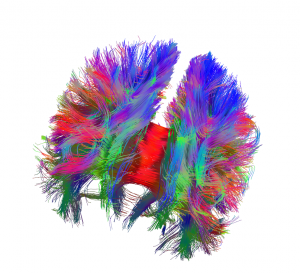There are large individual differences in the ability to navigate as well as the acquisition of spatial knowledge. Because navigation is a relatively complex process involving many brain areas and systems, it is still unclear how these systems interact to create the process of navigation. Understanding how these processes contribute to individual differences in navigation opens up the potential for navigational training paradigms for those with navigational deficits.
This research is supported by the National Science Foundation (NCS-FO 2024633), the U.S. Army Research Office under cooperative agreement W911NF-19-2-0026 for the Institute for Collaborative Biotechnologies, and the Hellman Family Foundation
*Collaborators: Jeff Krichmar (UCI), Mary Hegarty (UCSB), Craig Stark (UCI), Jean Carlson (UCSB)
Selected Publications:
Izen, S.*, Chrastil, E.R.*, & Stern, C.E. (2018). Resting state connectivity between medial temporal lobe regions and intrinsic cortical networks predicts performance in a path integration task. Frontiers in Human Neuroscience 12, 415. *denotes equal authorship
Sherrill, K.R., Chrastil, E.R., Aselcioglu, I., Hasselmo, M.E., & Stern, C.E. (2018). Structural differences in hippocampal and entorhinal gray matter volume support individual differences in first-person navigational ability. Neuroscience 380, 123-131.
Chrastil, E. R., Sherrill, K.R., Aselcioglu, I., Hasselmo, M.E., & Stern, C.E. (2017). Individual differences in human path integration abilities correlate with gray matter volume in retrosplenial cortex, hippocampus, and medial prefrontal cortex. eNeuro, 4(2), e0346-16.2017, 1-14.

